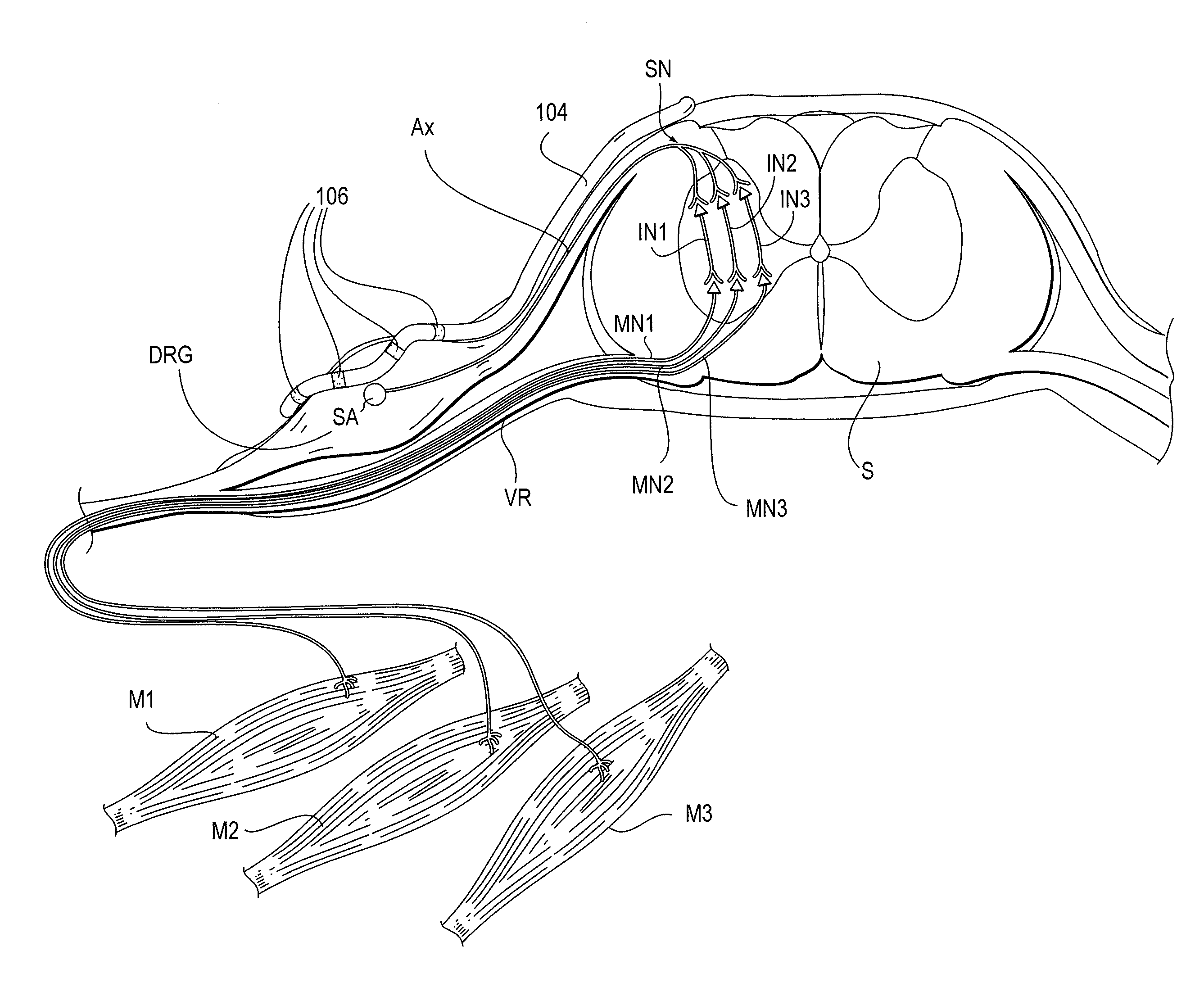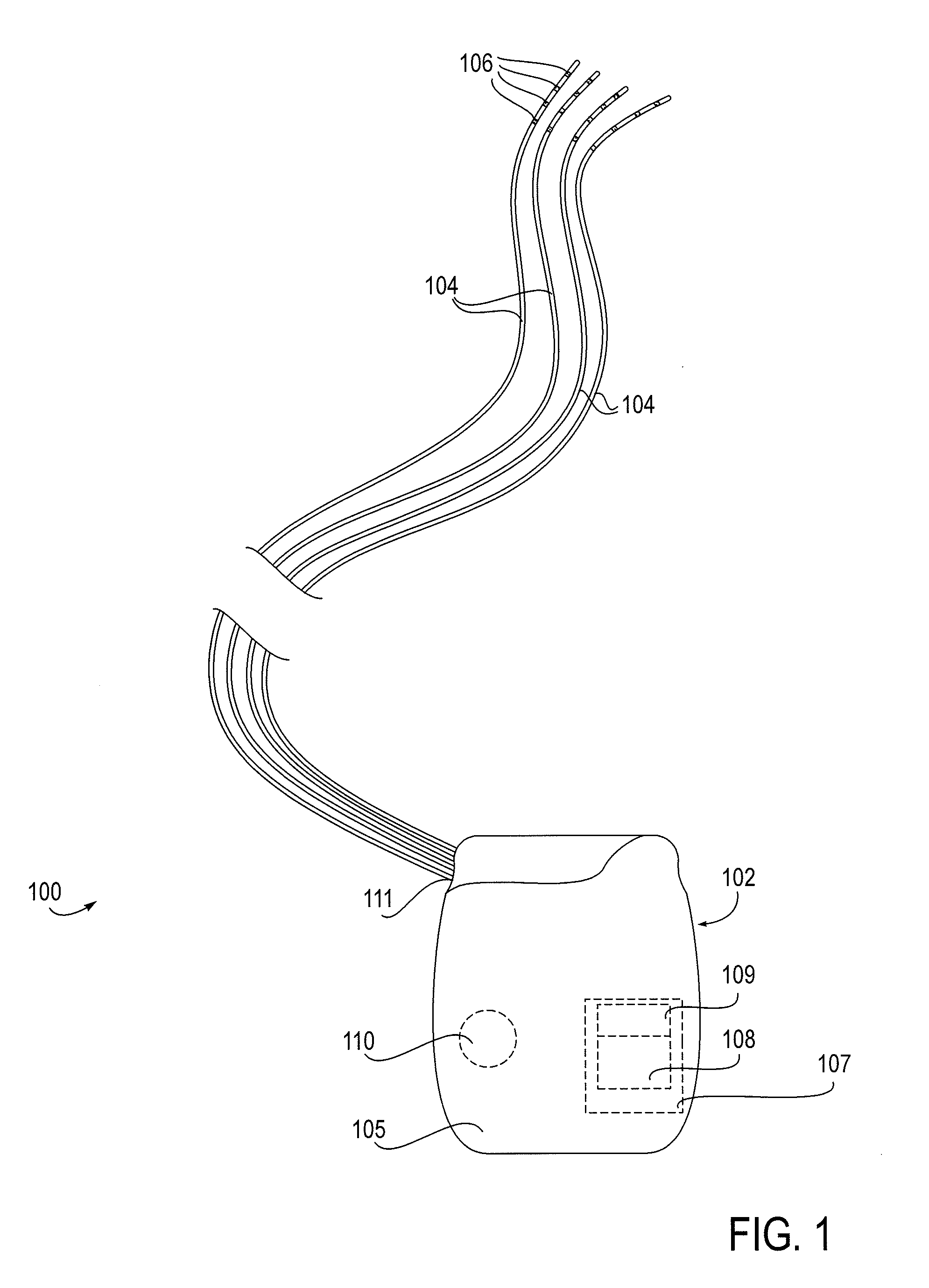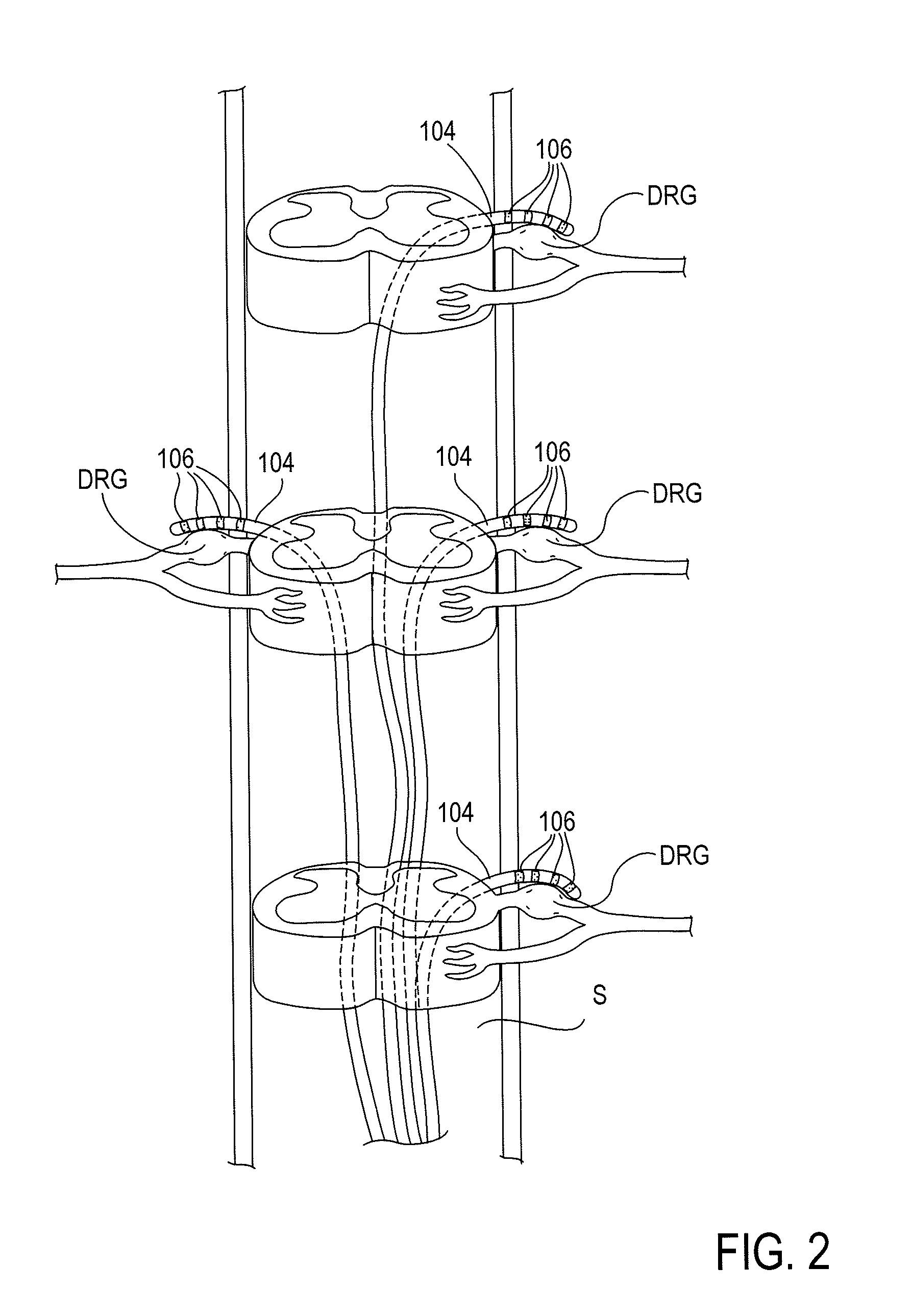Devices, systems and methods for the targeted treatment of movement disorders
a technology for movement disorders and devices, applied in the field of devices, systems and methods for the targeted treatment of movement disorders, can solve the problems of medication side effects, interfere with the speed, fluency, quality and ease of movement, nausea, vomiting, etc., and achieve the effect of reducing the symptom of the movement disorder
- Summary
- Abstract
- Description
- Claims
- Application Information
AI Technical Summary
Benefits of technology
Problems solved by technology
Method used
Image
Examples
Embodiment Construction
[0036]The present invention provides devices, systems and methods for the targeted treatment of movement disorders. Such movement disorders include, among others,
1) Akathisia
[0037]2) Akinesia (lack of movement)
3) Associated Movements (Mirror Movements or Homolateral Synkinesis)
[0038]4) Athetosis (contorted torsion or twisting)
5) Ataxia
[0039]6) Ballismus (violent involuntary rapid and irregular movements) and Hemiballismus (affecting only one side of the body)
7) Bradykinesia (slow movement)
9) Chorea (rapid, involuntary movement), including Sydenham's chorea, Rheumatic chorea and Huntington's disease
10) Dystonia (sustained torsion), including Dystonia muscularum, Blepharospasm, Writer's cramp, Spasmodic torticollis (twisting of head and neck), and Dopamine-responsive dystonia (hereditary progressive dystonia with diurnal fluctuation or Segawa's disease)
11) Geniospasm (episodic involuntary up and down movements of the chin and lower lip)
12) Myoclonus (brief, involuntar...
PUM
 Login to View More
Login to View More Abstract
Description
Claims
Application Information
 Login to View More
Login to View More - R&D
- Intellectual Property
- Life Sciences
- Materials
- Tech Scout
- Unparalleled Data Quality
- Higher Quality Content
- 60% Fewer Hallucinations
Browse by: Latest US Patents, China's latest patents, Technical Efficacy Thesaurus, Application Domain, Technology Topic, Popular Technical Reports.
© 2025 PatSnap. All rights reserved.Legal|Privacy policy|Modern Slavery Act Transparency Statement|Sitemap|About US| Contact US: help@patsnap.com



